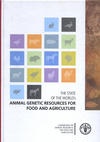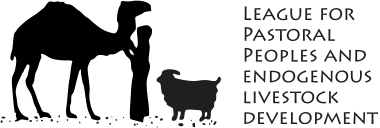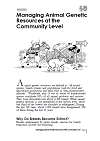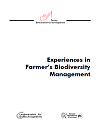State of the World’s Animal Genetic Resources for Food and Agriculture
This report covers the state of agricultural biodiversity in the livestock sector, livestock sector trends, capacities in animal genetic resource management, the management of animal genetic resources, and needs and challenges. The report was adopted by the First International Technical Conference on Animal Genetic Resources on 1-7 September 2007 in Interlaken, Switzerland. Section 1C, on flows of animal genetic resources, was prepared by LPP’s Evelyn Mathias, Ilse Koehler-Rollefson and Paul Mundy.

Download document


